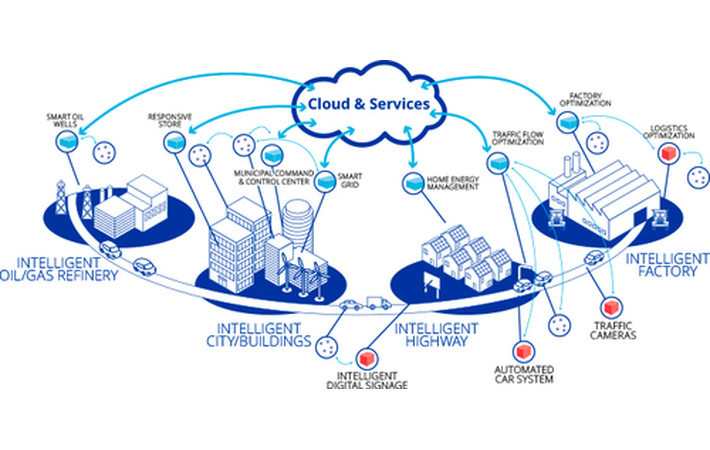
Published on 11/07/2016 | Strategy
As demand shifts and pricing remains volatile, the oil and gas industry has faced significant challenges across all aspects of the business, including operations, revenue/profit margins and environmental sustainability. The industry holds a unique set of complexities that can lead to a multitude of setbacks. Reserves are drying out, forcing companies to move their operations to more remote and therefore difficult to monitor locations. Analyzing and gathering data in more remote settings makes it harder to produce real-time feedback and results. Consequently, there is a lack of operational insight, resulting in missed opportunities to use data to make business-critical decisions that impact the bottom line.
In short: the current technology that supports much of the oil and gas sector does not provide manufacturers with useful data and statistics to propel the next-generation thinking necessary to foster innovation and keep the process both financially and environmentally sustainable.
The Internet of Things (IoT) is a network of both physical devices and software that work together to increase connectivity. As IoT has become increasingly integrated into our daily lives (through connected devices like Nest and the emerging popularity of “Smart City” features, for example), the industrial world has been slow to incorporate its benefits into business practices. Embracing the capabilities of Industrial IoT (IIoT) holds great potential for the oil and gas industry to:
Identify minor problems before they become major issues;
- Simplify maintenance processes to reduce downtime;
- Collect data to inform key decisions;
- Avoid safety hazards;
- Increase environmental efficiency; and
- Impact the bottom line.

IIoT + oil and gas means connectedness across the supply chain – a great opportunity for companies operating in such a controlled and commoditized environment.
Operations
With IIoT technology “at the edge” (e.g., sensors on remote refinery machinery), companies can identify problems faster and diagnose recurring issues with more clarity. They can deploy maintenance teams proactively – rather than sending them out to check if a problem even exists.
Data
Access to data means more intelligent business decisions that save money in the long- and short-term. IIoT allows for real-time data collection in a way the industry has never seen – which also opens the door for new roles within oil and gas companies, as analytics becomes more influential than ever before.
Safety and the Environment
With existing systems, companies have to spend massive amounts of time and resources just to monitor devices, causing production efficiency issues. With increased efficiency comes a reduced environmental footprint in an industry where every little bit counts. And, proactive identification of problems means more likelihood to avoid safety and environmental hazards like spills and waste, the importance of which cannot be underestimated.
Revenue
From increased asset integrity to early identification of problems and access to massive amounts of data, the opportunities to increase revenue are seemingly endless.
Adoption is Inevitable
While IIoT adoption may seem like a massive endeavor, there are several options in the marketplace that enable oil and gas companies to “retrofit” existing equipment. This can be done at low costs at the same time as annual maintenance and upgrades, eliminating the need to replace functioning equipment.
When it comes to the Internet of Things, the industrial world, and the oil and gas industry especially, is behind the consumer world and many other industries. Given all of the operational, environmental, and cost-saving benefits, it won’t be long before oil and gas companies will explore new ways to embrace IIoT.
IIoT is the future of business, especially in the ever-evolving oil and gas industry.
This article was originally posted on LinkedIn.